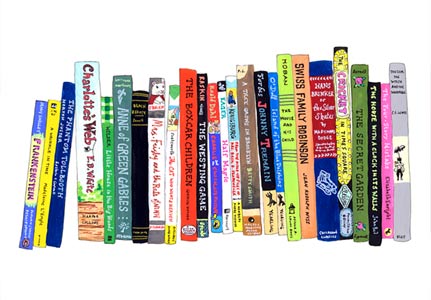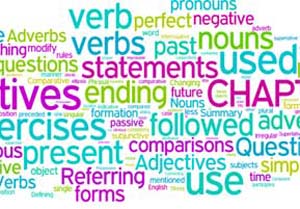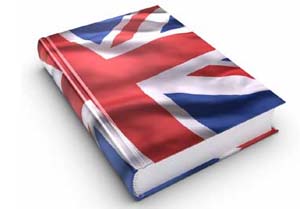 |
|
 |
|
| Visite: 5303 | Gradito: |
Leggi anche appunti:Italo Calvino: vita e opereItalo Calvino: vita e opere Italo calvino nasce il 15 ottobre 1923 a Mappa concettuale sulla MUSICALa Musica MOTIVAZIONI: La musica: un mondo che mi ha Madame BovaryMadame Bovary L' opera, iniziata nel 1851, poco dopo il ritorno dal famoso |
 |
 |
THE CRISIS OF CERTAINTIES - JAMES JOYCE & VIRGINIA WOOLF
In the last two decades of the I9th century the system of Victorian values had already come to an end. The pervasive feeling was that material gain implied spiritual loss. Victorian private morality had been authoritarian and taboo-ridden, children's upbringing strict, and the decency of family life maintained, whatever went on under the surface. The positivistic faith in progress and science had led people to believe that all human misery would be swept away. Social investigations had been carried out following 'scientific' principles, and economy had been likewise affected. Yet a number of blows were struck at this rationalist self-confidence.
The First World War left the country in a disillusioned and cynical mood.
After the war nothing seemed to be right or certain; even science and religion seemed to offer little comfort or security. Scientists and philosophers destroyed the old, predictable universe which had sustained the Victorians in their optimistic outlook, and new views of man and the universe emerged.
This sense of doubt developted into a spirit of revolt and experimentation in all artistic field.
The isolation and the alienation of modern man became the main themes of literature. Most movements emphasised the loss of the sense of continuity between past and present through a radical break with tradition.
Writers and poets drew inspiration from classical as well as new cultures to create a subjective mythology. Artists regarded the past as a source which they could remould in a personal, original way.
Particularly the early modernists were influenced by the ideas of the philosopher Henri Bergson and the psychoanalyst Sigmund Freud who became important points of departure for James Joyce and Virginia Woolf. These writers give greater importance to characters' consciousness, unconscious, memory and perception. James Joyce, in particular, began with naturalism and urban realism in his short story collection Dubliners (1914), then he moved on to experiment with new literary techniques, such as the interior monologue, the stream of consciousness, and literary parodies in UIysses (1922), which focuses on one day in the lives of two Dubliners.
James Joyce and "Ulysses"
James Augustine Aloysius Joyce (2 February - 13 January ) was an expatriate Irish writer and poet, widely considered to be one of the most influential writers of the 20th century. He is best known for his short story collection Dubliners (1914), and his novels A Portrait of the Artist as a Young Man (1916), Ulysses (1922), and Finnegans Wake (1939).
Particularly Ulysses is the climax of Joyce's creativity and sums up the themes and techniques he had developed in his previous work.
It was designed as a detailed account of ordinary life on an ordinary Dublin day, June 16th 1904, and Joyce planned each movement of each character on each street.
He made the very air of Dublin, the atmosphere, the feeling, the pIace, almost indistinguishable, certainly inseparable, from his human characters. Consequently, Dublin becomes itself a character in his novel.
Ulysses, like the Odyssey, is the story of a journey, the return home of the exile after the confrontation with death.
The centraI character, Leopold Bloom, is Joyce's common man, a parody of the wandering Odysseus and an embodiment of the wandering Jew. He leaves his home at eight o'clock on a Thursday morning in June to buy his breakfast and returns finally at two o 'clock the following morning. In the hours in-between, he lands on the shores of many streets, endures misadventures and delight, recalls the unfaithfullness of his wife and the death of his little son, tastes gall and honey, as Homer's hero did, and he reaches the "sanctuary' of his 'Ithaca' where his wife, Molly, an ironical and unfaithfull Penelope, gives rein to the flow of her thoughts and reveries, in a long monologue which closes the novel. During his wanderings, Bloom meets a contemporary version of Telemachus, Stephen Dedalus, who is the alienated protagonist of A Portrait of an Artist as a Young man, and who becomes, momentarily, his adopted son.
Stephen Dedalus, Mr Bloom and Mrs Bloom are more than individuals: they represent two aspects of human nature. Stephen is pure intellect and embodies every young man seeking maturity; Mrs Bloom stands for flesh, since she identifies herself totally with her sensual nature and fecundity: Mr Bloom, uniting the extremes, is everybody the whole of mankind.
Joyce shows mastery of a number of methods in the creation of his art. Though none of his methods were altogether new, their combination and particular development may puzzle the reader.
The cinematic technique with the literary equivalents of close-ups, flashbacks, tracking shots, jump cuts; question and answer; dramatic dialogue; and the juxtaposition of events, with the consequent construction of order and unity from their randomness enabled him to render his characters' inner life creating the so-called 'collage technique', quite similar to the techniques used by the cubist artists. In Ulysses he brought to perfection the stream of consciousness technique principally in the final, unpunctuated chapter of Ulysses, often called 'Molly Bloom's Soliloquy', a long stream of consciousness passage comprising her thoughts as she lies in bed next to Bloom.
In literature, the stream of consciousness is a technique that records the multifarious thoughts and feelings of a character without regard to logical argument or narrative sequence. The writer attempts by the stream of consciousness to reflect all the forces, external and internal, influencing the psychology of a character at a single moment. The phrase "stream of consciousness" to indicate the flow of inner experience was first used by William James in Principles of Psychology.
Another technique to reproduce the complexity of the human mind is the interior monologue.
This techinique was principally usedby Virginia Woolf.
Virginia Woolf and "Mrs Dalloway"
Virginia Woolf (25 January - 28 March ) was a British author who is considered to be one of the foremost modernist/feminist literary figures of the twentieth century. Between the World Wars, Woolf was a significant figure in London literary society and a member of the Bloomsbury Group. Her most famous works include the novels Mrs. Dalloway To the Lighthouse Orlando, and her essay A Room of One's Own
In her works as Mrs Dalloway Virginia Woolf identifies the subjective reality with the technique called "interior monologue". However, unlike Joyce's characters who show their thoughts directly through interior monologue, sometimes in an incoherent and syntattically unorthox way, Woolf never lets her characters' thoughts flow out of control, and maintains logical and grammatical organisation.
The protagonist of Mrs Dalloway is Clarissa Dalloway, a London society lady of fifty-one the wife of a Conservative MP, Richard Dalloway, who holds extremely conventional views on politics and women's rights. The story starts at 10 a.m. on a Wednesday early in June 1923. Clarissa Dalloway goes to Bond Street to buy some flowers for a party she is giving that evening at her house. While she is in the flower shop, a car drives noisily past and shifts the attention to the street, where Septimus and Lucrezia Warren Smith are walking: he is an estate agent's clerk and shell-shocked veteran of the war, she is an Italian girl. Doctors have been called in to deal with Septimus's mental disorder, first Dr Holmes, and now Sir William Bradshaw, the famous nerve specialist. Clarissa walks back home and there she receives an unexpected visit from Peter Walsh, the man she once loved in her youth. He then leaves Clarissa 's house and goes to Regent's Park, where he catches a glimpse of the Harren Smiths who are going to Sir William Bradshaw's for an interview. The interview lasts three-quarters of an hour and results in Sir William arranging for Septimus to go into one of his clinics. At six p.m. Septimus jumps out of the window of his room, and the ambulance carrying his body passes by Peter Walsh, who is going back to his hotel. All the characters who have been in some way important during the day are present at Clarissa's party. The Bradshaws arrive and Clarissa hear from them of Septimus's death, with which she feels a strong connection.
It is clear from the pIot that the meaning of the novel does not lie in the sequence of events, but in the way a specific use of time and pIace holds them together. Clarissa does not simply walk up Bond Street and back again, she also perceives, thinks, remembers, so that her present experience and future plans are suffused with the feelings and experiences of the past.
Woolf's fiction is often characterised by two levels of narration, one of external events arranged in chronological order and one of the flux of thoughts arranged according to the association of ideas.
Mrs Dalloway illustrates well the new narrative technique in which the use of a third person narrator is very limited and employed only for external events, while the main part of the novel develops through interior monologue.
Interior monologue is often confused with the stream of consciousness, although they are quite different. In fact the former is the verbal expression of a psychic phenomenon, while the Iatter is the psychic phenomenon itself.
It is its immediacy which distinguishes the internaI monologue from both the soliloquy and the dramatic monologue, which are formaI speeches respecting conventional syntax. This 'immediate speech' is freed from introductory expressions Iike 'he thought, he remembered, he said', from formal structures, and from Iogical and chronological order .
There are four kinds of interior monologue:
indirect interior monologue, where the narrator never Iets the character's thoughts flow without controI, and maintains Iogical and grammatical organisation;
the interior monologue, characterised by two Ievels of narration: one external to the character's mind, the other internaI;
the interior monologue where the character's thoughts flow freely, not interrupted by external elements;
the extreme interior monologue, where words fuse into others to create new expressions.
 |
| Appunti su: https:wwwappuntimaniacomumanisticheletteratura-italianothe-crisis-of-certainties-jame15php, the crisis of certainties, |
|
| Appunti Grammatica |  |
| Tesine Educazione pedagogia |  |
| Lezioni Inglese |  |